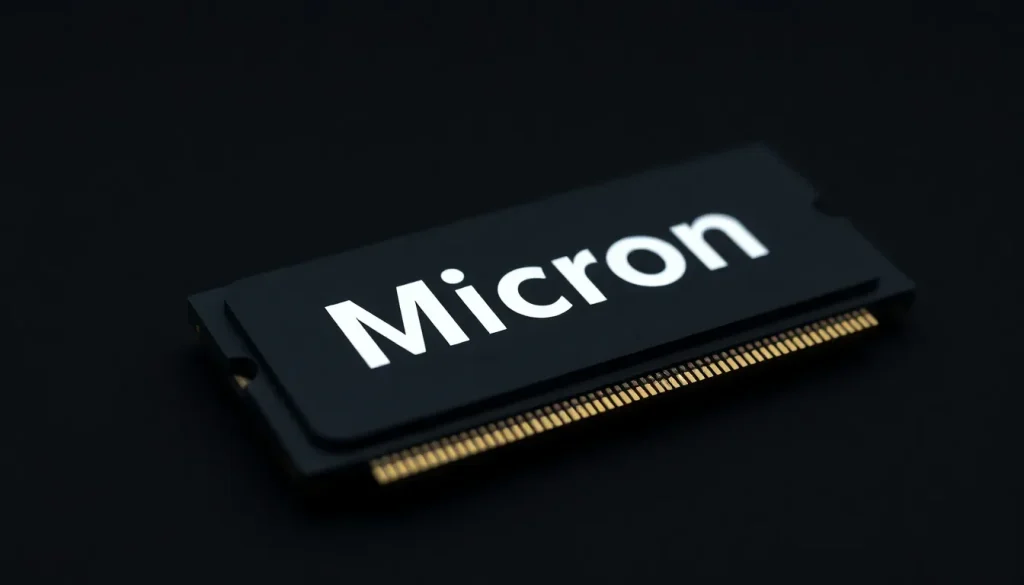Micron Q1 FY21 Results Show DRAM Industry Rebound Begins

Micron Technology, a key player in the semiconductor industry, has recently reported impressive financial results for its first fiscal quarter of 2021. These results not only highlight the company's resilience amid challenging market conditions but also reflect the broader recovery within the DRAM industry. As digital transformation accelerates, understanding the implications of Micron's performance becomes increasingly essential for investors and technology enthusiasts alike.
In this context, let's delve deeper into the factors driving Micron's success and what the future may hold for the company and the semiconductor market.
Micron's Strong Financial Performance
Micron posted revenues of $5.77 billion for Q1 FY2021, marking a significant 12% increase compared to the same period last year. This growth is underpinned by a robust net income of $803 million, representing a remarkable 63.5% year-over-year increase. The company believes it has reached the lowest point of a DRAM price depression that has affected the industry.
Looking ahead, Micron anticipates revenues for the next quarter to be around $5.8 billion, suggesting a 21% increase year-over-year. However, the company has noted some challenges, including a power outage in Taiwan on December 3 and an earthquake on December 10, which have impacted DRAM production. These events have been factored into the company's revenue expectations for the upcoming quarter.
Industry Trends and Growth Prospects
Sanjay Mehrotra, President and CEO of Micron, emphasized the changing landscape of the memory and storage industry. He remarked that revenues in the memory and storage sector have outpaced the broader semiconductor industry, rising from approximately 10% of semiconductor revenues in the early 2000s to nearly 30% today. This shift underscores the growing importance of these technologies in various applications, especially with the rise of artificial intelligence (AI), 5G, and cloud computing.
Micron's strategic positioning is particularly noteworthy as it leads in both DRAM and NAND technologies simultaneously. This dual leadership enables the company to capitalize on the accelerating digital transformation of the global economy.
Revenue Breakdown by Product Segment
Micron's revenue composition reveals key insights into its performance across different product segments. The breakdown is as follows:
- DRAM: $4.056 billion (70% of total revenue), up 17% year-over-year
- NAND: $1.574 billion (27% of total revenue), up 11% year-over-year
- Storage: $911 million, down 6% year-over-year
- Embedded: $809 million, up 10% year-over-year
This diversity in revenue streams not only stabilizes Micron's financial performance but also allows for targeted investments in growing segments.
Advancements in 3D XPoint Technology
Micron's Chief Financial Officer, Dave Zinsner, highlighted that revenues from 3D XPoint technology are now included in the Compute and Networking Business Unit. Excluding 3D XPoint from the previous year's quarter, the revenues in this segment would show a 14% year-over-year increase. This indicates a significant role played by 3D XPoint in Micron's overall performance.
It is estimated that approximately $169 million of the Compute and Networking Business Unit's revenues of $968 million for Q1 FY2020 were derived from 3D XPoint technology, particularly in the context of Intel's Optane products.
Furthermore, Micron noted that NVMe technology now represents over 90% of client SSD bits, with QLC flash making up nearly half of the total. Mehrotra remarked, "We are leading the industry with the broadest portfolio of QLC SSDs across client, consumer, and data center markets." This innovation in QLC technology is crucial for making SSDs more cost-effective and is accelerating the transition from HDDs to SSDs.
Transition to DDR5 and Future Opportunities
As the industry evolves, Micron is making strides towards the transition to DDR5 memory, which promises to double bandwidth and enhance power efficiency. The company plans to commence this transition in the second half of fiscal 2021, which is expected to further drive demand for DRAM products.
New server CPUs, such as Intel's Ice Lake, are anticipated to boost DRAM demand significantly as they support more memory channels, enhancing overall system performance.
Growing Embedded Market and Automotive Sector
Micron's embedded market is also showing promising signs of growth. Mehrotra pointed out that the company experienced a record revenue quarter in the automotive sector, driven by the resurgence of automobile manufacturing worldwide and an increase in memory and storage content per vehicle.
This trend is indicative of the automotive industry's increasing reliance on advanced memory solutions, as vehicles become more connected and autonomous. Micron's ability to adapt its offerings to meet the needs of this evolving market will be critical for sustaining growth.
Conclusion
With a firm grasp on both DRAM and NAND technologies, coupled with a strategic focus on emerging markets such as automotive and AI, Micron is well-positioned for continued success. As the semiconductor industry rebounds and the demand for memory solutions rises, stakeholders should keep a close eye on Micron's developments.
For those interested in diving deeper into the dynamics of the semiconductor market, we recommend watching this insightful video: .




Leave a Reply